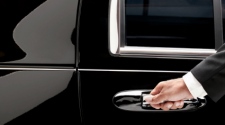Unless something changes, the future will be full of orphaned Jamba Juices and Cinnabons rolling around abandoned parking lots like tumbleweeds. According to the University of Alabama Birmingham Collat School of Business, the American symbol of brick-and-mortar prosperity, the shopping mall, is on the decline, “Less disposable income in the pockets of low to middle-income consumers meant fewer shoppers in malls across the country, which in turn hit the profits of these malls hard.”
It’s no wonder malls are getting hit hard. We’ve all gone into a brick-and-mortar store fully aware of the fact that we’re going to try something out, leave the store, then buy it on Amazon. The sales associate probably sees it coming but they have to grin and bear it anyway. Shoppers can almost always find better prices and a better selection online. So how do these stores convert us loitering ne’er-do-wells into sales?
In order to keep customers coming through the doors and to effectively distract us from feeling like we’re shopping, stores, both large and small, need to offer what online retailers cannot: an enjoyable, community-minded experience. Give shoppers a compelling reason to not buy something online. Which I’m sure isn’t easy, based on the fact that as a society we’ve found it necessary to have mobile apps for ordering pizza. We apparently want to minimize human contact as well as number of steps to gratification. Additionally, with the Oculus Rift arriving early next year, people are already talking about shopping in virtual reality.
Urban Outfitters’ flagship store in New York City has turned the shopping experience into so much more. In addition to their apparel and housewares, the store has a cafe, a bookstore, a record store, and an Instagram photo printing station. So spending time at Urban Outfitters doesn’t have to be just shopping. It doesn’t have to be shopping at all, really. It can be a multi-faceted experience that does or does not feature shopping. Instead of being just a store, this Urban Outfitters is a social and cultural hub.
A good first step in assuring a store’s future is to create a shopping environment that feels vibrant and inviting. Most shoppers prefer to try something out or on before they buy it, so having a shopping environment that encourages this will allow customers to become more confident in their purchases. At this point online retailers are unable to recreate the experience of trying a product, so brick-and-mortars need to really rub that in their faces.
Like the Urban Outfitters in NYC, stores can take steps to become more than just the products within them. They can become assets to the community by being a space that embodies the store’s core beliefs. What sort of events, activities, or services would your demographic be interested in? A space dedicated to providing these things to customers will create an environment that encourages relationships that go beyond the standard shopping experience.
A sure-fire way to instill skepticism in a potential customer is dealing with a retail associate who is disenchanted or bad at their job. Special attention needs to be paid to equipping associates with the tools they need to be competent sales people. However, customer-facing positions are some of the most frustrating jobs on the market. People can be downright awful sometimes and it’s up to store managers to listen to concerns and make sure associates are being compensated fairly. Additionally, they must be quick to dole out praise and commendation when employees earn it. Studies have shown this is the top motivator for performance, above financial incentives and other benefits. So if a sales associate likes their job, it’ll come through in their customer service and in turn make for a better shopping experience for all.
There is often uncertainty when making purchases online: Will these shoes fit? Will these purple drapes actually look more lavender in person? Will my one square meter plot on the sun be in a nice neighborhood? Two major advantages that brick-and-mortar stores still have is the ability to get rid of this uncertainty and the ability to create a relationship-centered environment with special events, activities, and other amenities. As long as the focus is on these two things, brick-and-mortars will remain a cornerstone of the shopping experience.
















